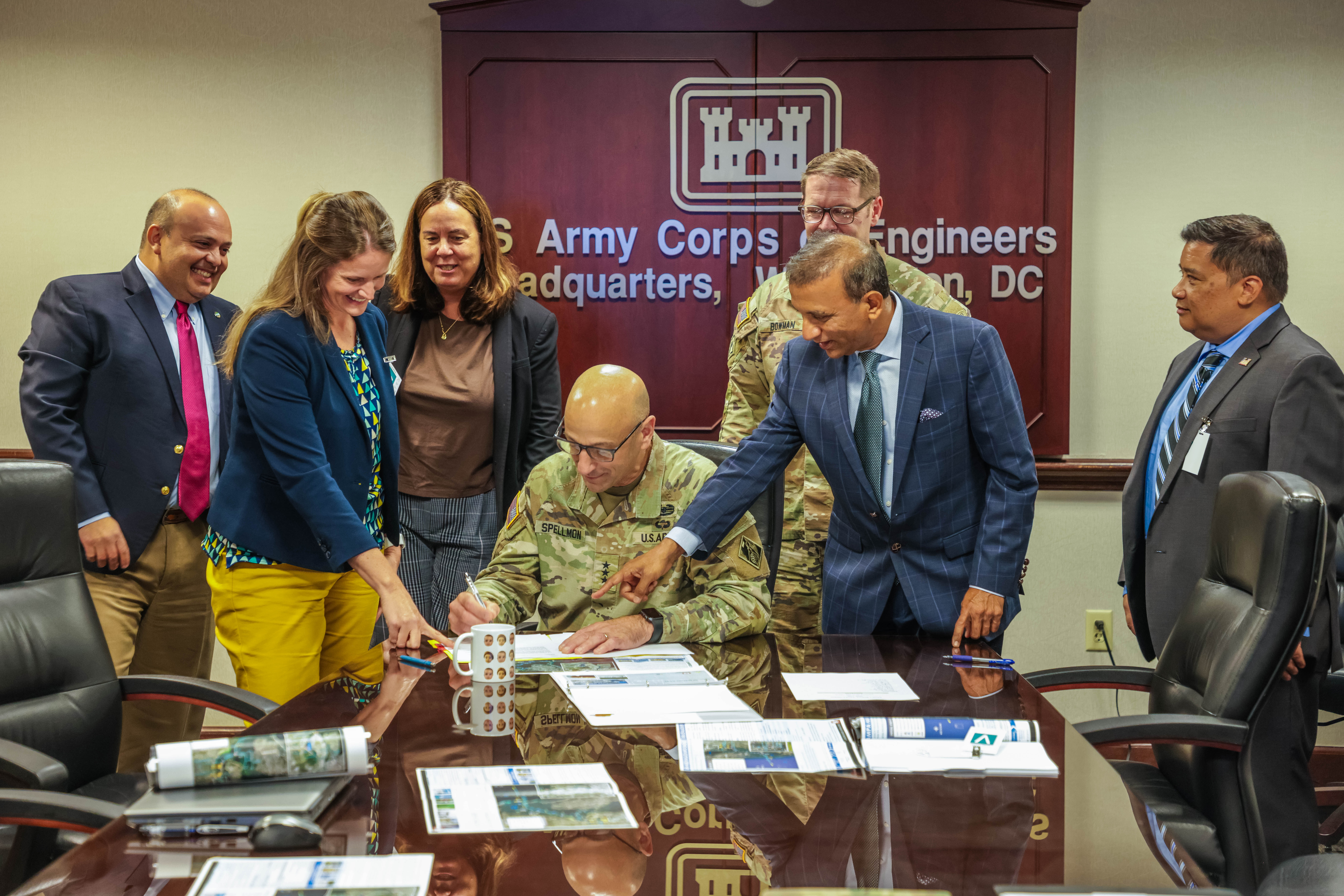Tampa Harbor Study GRR/EIS available for public comment
The USACE Jacksonville District final General Re-evaluation Report and Environmental Impact Statement (GRR/EIS) for the Tampa Harbor Navigation Improvement Study in Pinellas and Hillsborough Counties, Florida, is available for public review and comment through Sept. 23, 2024.
Links to all relevant documents are in the right-hand column of this page.
All comments and related correspondence can be sent via email to rachel.s.case@usace.army.mil; or by U.S. Postal Service to:
U.S. Army Corps of Engineers, Jacksonville District
ATTN: Ms. Rachel Case, Environmental Branch, Coastal Section
701 San Marco Blvd.
Jacksonville, FL 32207
Comments must be received by close of business Sept. 23, 2024, for consideration.
READ MORE HERE
USACE COMMANDER SIGNS CHIEF'S REPORT FOR TAMPA HARBOR NAVIGATION PROJECT
On August 14th, 2024 , the 55th Chief of Engineers and commanding general of the U.S. Army Corps of Engineers, Lt. Gen. Scott Spellmon signed t he chief's report containing recommendations to Congress for the Tampa Harbor Navigation Improvement Study for inclusion in the next Water Resources Development Act. The purpose of the Tampa Harbor Navigation Improvement Study is to reduce marine transportation costs and operational inefficiencies for tankers, bulk carriers, and general cargo ships using Tampa Harbor and improve navigation efficiency within the Federal Tampa Navigation Channels. Tampa Bay is a large, natural Y-shaped harbor and shallow estuary connected to the Gulf of Mexico on the west-central coast of peninsular Florida. The Tampa Harbor Federal Navigation Project includes roughly 70 miles of channels from the Gulf of Mexico entrance at the Egmont Bar north to the City of Tampa, including Hillsborough River, Alafia River, and the Upper Channels. Port Tampa Bay is Florida’s largest port in cargo tonnage and land area. It serves as a major cruise port and services a diverse mix of bulk, break-bulk, container commodities, and energy products that serves Florida. The port contributes over $17 billion in economic impact supporting more than 85,000 jobs. The Tampa Harbor Federal Navigation Channel was last deepened to 43 feet. If approved by Congress and included in the next Water Resources Development Act, separate appropriations will need to be passed to construction of the project.
he chief's report containing recommendations to Congress for the Tampa Harbor Navigation Improvement Study for inclusion in the next Water Resources Development Act. The purpose of the Tampa Harbor Navigation Improvement Study is to reduce marine transportation costs and operational inefficiencies for tankers, bulk carriers, and general cargo ships using Tampa Harbor and improve navigation efficiency within the Federal Tampa Navigation Channels. Tampa Bay is a large, natural Y-shaped harbor and shallow estuary connected to the Gulf of Mexico on the west-central coast of peninsular Florida. The Tampa Harbor Federal Navigation Project includes roughly 70 miles of channels from the Gulf of Mexico entrance at the Egmont Bar north to the City of Tampa, including Hillsborough River, Alafia River, and the Upper Channels. Port Tampa Bay is Florida’s largest port in cargo tonnage and land area. It serves as a major cruise port and services a diverse mix of bulk, break-bulk, container commodities, and energy products that serves Florida. The port contributes over $17 billion in economic impact supporting more than 85,000 jobs. The Tampa Harbor Federal Navigation Channel was last deepened to 43 feet. If approved by Congress and included in the next Water Resources Development Act, separate appropriations will need to be passed to construction of the project.
 The U.S. Army Corps of Engineers Jacksonville District and the non-federal sponsor, Port Tampa Bay, executed the Feasibility Cost Sharing Agreement (FCSA) on 18 August 2021. This agreement also allowed the non-federal sponsor to accelerate their share of study costs.
The U.S. Army Corps of Engineers Jacksonville District and the non-federal sponsor, Port Tampa Bay, executed the Feasibility Cost Sharing Agreement (FCSA) on 18 August 2021. This agreement also allowed the non-federal sponsor to accelerate their share of study costs.

View the Tampa Harbor Navigation Improvement Study Presentation
